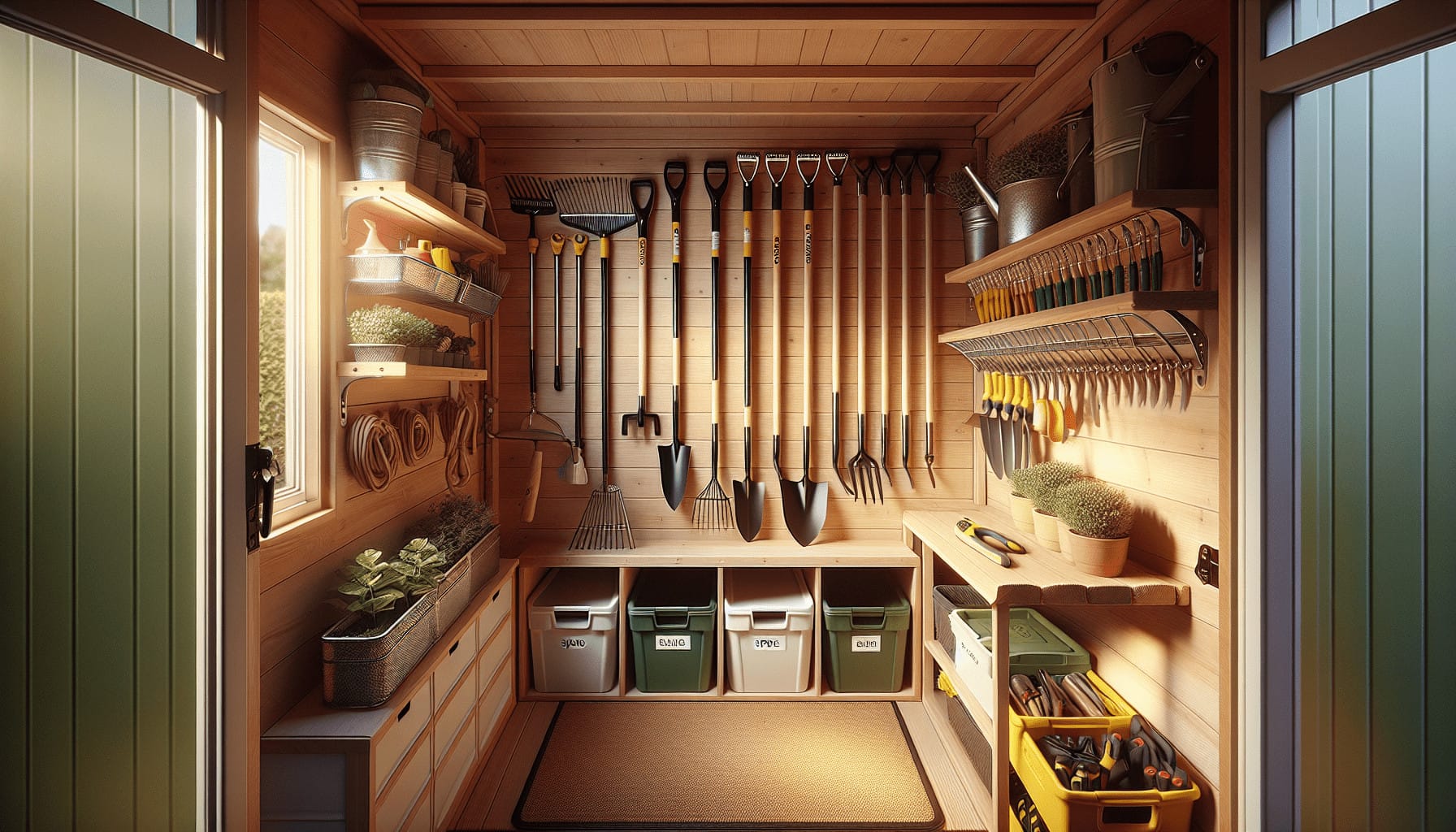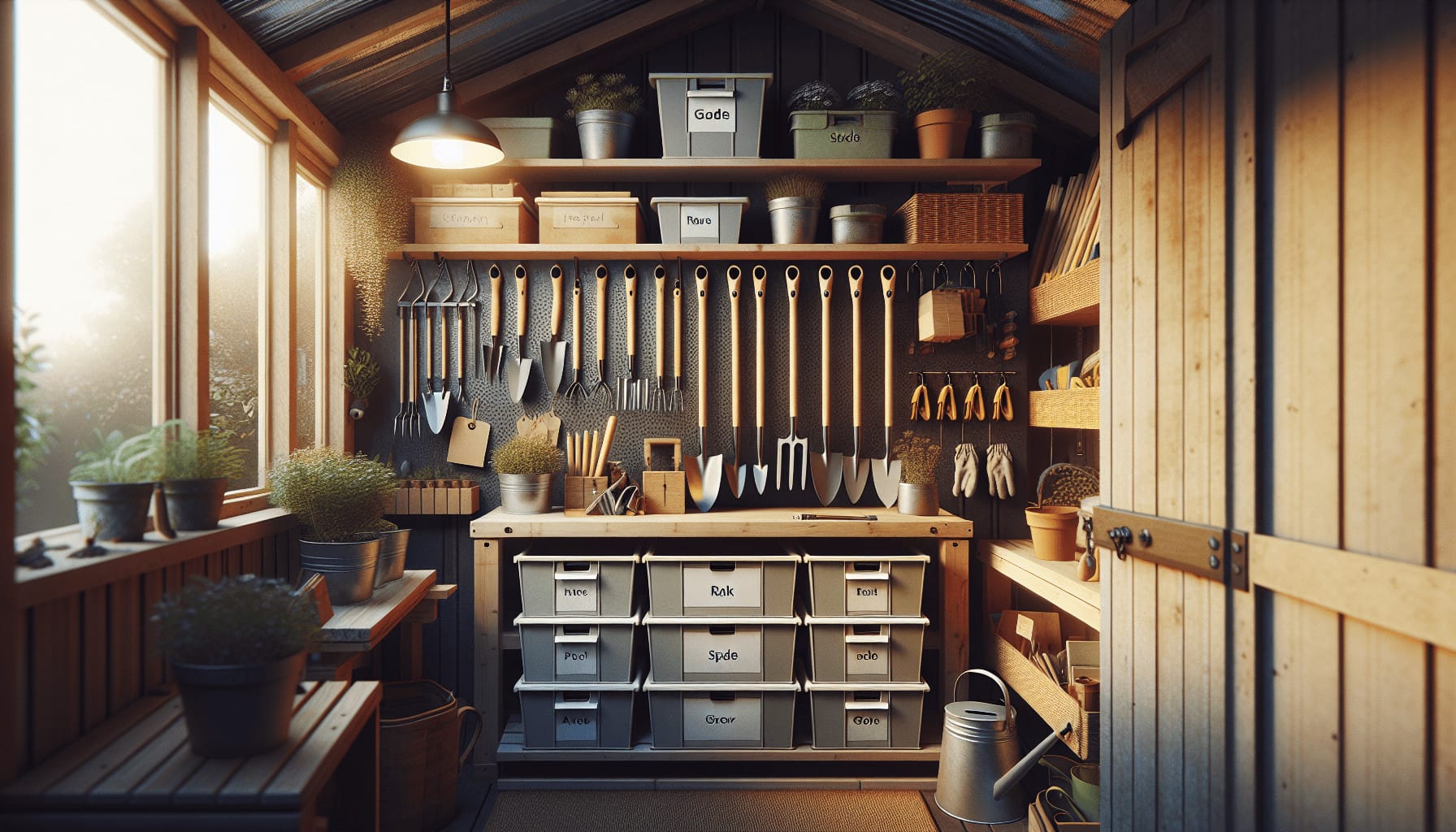Have you ever wondered how you can make the most of a small garden shed? It might surprise you how efficiently such a compact space can be utilized with a bit of creativity and planning. By transforming your small garden shed into a well-organized storage area, you’ll create a more enjoyable gardening experience and save time by having everything you need at your fingertips.

Maximizing Space in Your Small Garden Shed
The first step in organizing a small garden shed is to manage the available space effectively. With a few smart strategies, you can turn every inch into useful storage, ultimately making your gardening tasks smoother and more pleasant.
Assessing Your Storage Needs
Before rethinking your shed’s organization, take some time to evaluate what tools and materials you need to store. Different gardeners have different tools and supplies, so jot down everything you own and frequently use. Categorizing them based on size, usage frequency, or type can help in planning where each item should go.
Prioritizing Essential Tools
Once you have a list of your gardening tools, prioritize them. Think about which items are essential and need to be easily accessible and which are used less frequently. This can guide you in assigning prime storage spots to the most commonly used tools.
Vertical Storage Solutions
Walls can be your best friend when organizing a small space. Consider using vertical storage shelves and hanging systems to keep tools off the ground. Install sturdy shelves for heavier equipment and hooks for lighter items. This not only saves on floor space but also makes sure everything has its place.
| Storage Item | Suitable Tools/Equipment |
|---|---|
| Shelving Units | Lawn fertilizers, plant pots |
| Pegboards & Hooks | Hand tools, hoses, scissors |
| Wall Racks | Brooms, spades, rakes |
Creative Storage Ideas
Using creativity in your storage solutions can turn a cluttered garden shed into a well-organized oasis where everything is easy to find.
Pegboards for Small Tools
Pegboards offer flexibility and visibility, allowing you to store small tools conveniently. Arrange your pegboard with hooks and shelves, and label each spot with the tool it will hold. This not only keeps tools organized but also helps ensure everything returns to its place after usage.
Magnet Strips for Metal Tools
For metal tools like shears and trowels, installing magnet strips can be a handy way to store these items within easy reach. This method prevents tools from getting lost in clutter and allows you to grab what you need quickly.
Multi-Functional Furniture
Consider incorporating furniture that serves dual purposes. Benches with storage compartments or foldable tables can provide additional workspace while keeping things tidy. These pieces can double as places to sit or work while storing tools or supplies beneath or within them.
Keeping Different Tools Organized
Every gardener knows there’s a variety of tools involved, from the tiniest seed packets to bulky lawnmowers. Each requires a different organizational approach.
Properly Storing Long-Handled Tools
Long-handled tools like shovels and rakes can be stored on wall brackets or in corner tool holders. This not only helps keep them sorted but prevents them from tipping over and getting in the way.
Segregating Electrical and Mechanical Tools
Power tools and their accessories should be kept low to prevent damage from falls and to make them less cumbersome to lift. Consider organizing cords and accessories into bins or specially designed wall systems to avoid tangling.
Keeping Small Supplies at Hand
Small supplies, such as seed packets, tags, and ties, can easily become misplaced. Use transparent jars or containers to store these items. Not only does this organization method keep them visible and accessible, but it also protects them from moisture and pest exposure.
Seasonal Storage Rotation
Adjusting your storage based on seasonal needs ensures that your current must-haves are always within reach and that off-season items are securely stored.
Rotating Based on Seasons
Implement a rotational storage system to make items that are currently in season more accessible. For example, during spring, make tools for planting and cultivating prominent, while in winter, prioritize storage for snow shovels and ice melt.
Labeling for Easy Identification
Labeling shelves, bins, and drawers can help you quickly locate items, reducing unnecessary rummaging and time-wasting. Use easy-to-read labels, and include icons if possible for quick visual identification.

Maintenance of an Orderly Shed
Maintaining the organization of your shed is an ongoing process. Routine upkeep can help keep your shed tidy and extend the life of your tools.
Regular Cleaning Sessions
Schedule regular cleaning sessions for your shed. This involves sweeping out dirt, checking for pests, and ensuring that everything is still in its designated place. A clean shed will keep tools in better condition and make it easier to spot any missing or damaged items.
Inspecting and Caring for Tools
Regularly inspect your tools for rust, splintering, or wear and tear. Clean and oil them as needed to extend their lifespan. A quick inspection during each clean-up session can help ensure that your investment in gardening tools lasts.
Involving the Whole Family
If gardening is a family hobby, involve everyone in maintaining the shed. Assign tasks like putting away tools after use or cleaning specific areas. Teaching children about organization can help them take responsibility and reduce the burden on you.
Benefits of a Well-Organized Shed
Having a well-organized garden shed is more than just an aesthetic improvement. It comes with several practical benefits that enhance your gardening experience.
Time Savings and Efficiency
When tools are systematically arranged, you’ll spend less time searching and more time gardening. The spillover benefit is maximized efficiency, where each task can be completed without unnecessary interruptions.
Safe and Secure Storage
Good organization promotes safety. Properly stored tools reduce the risk of injuries from tripping or falling objects. Likewise, securely storing sharp tools or toxic substances like pesticides enhances the safety of both adults and children using the shed.
Prolonged Tool Longevity
Storing tools appropriately can drastically extend their durability. Tools that are well-maintained remain rust-free, blades remain sharp, and handles stay splinter-free, ensuring that each tool performs optimally for years.
Enjoyment and Satisfaction
There is something inherently satisfying about working in a tidy space where everything has its designated place. An organized garden shed complements the tranquility and joy you derive from gardening and inspires creativity and innovation in your projects.
In the end, organizing and storing tools in a small shed is all about planning, creativity, and regular maintenance. By transforming this modest space into a functional and well-organized area, you not only enhance its efficiency but create a delightful and tranquil spot for your gardening endeavors. With these strategies, you’ll find that even the smallest of sheds can support big gardening ambitions, providing an effective and pleasurable gardening environment.
